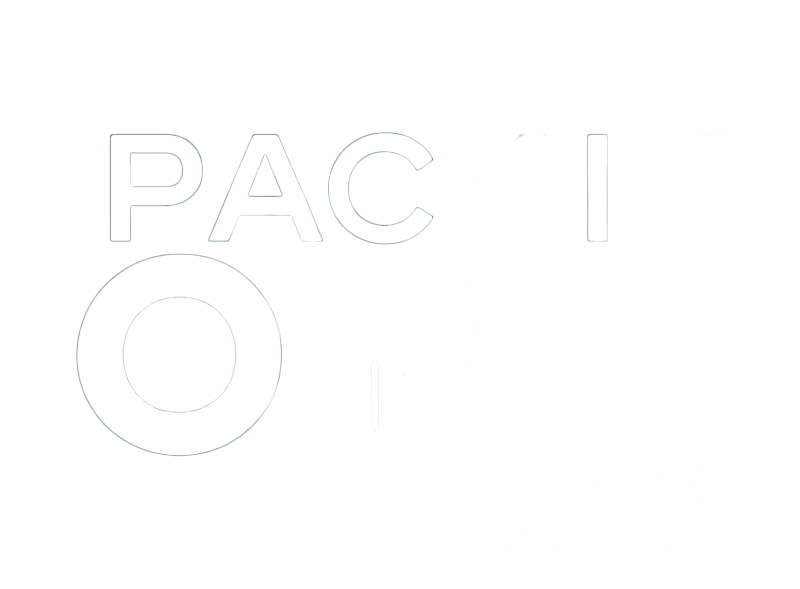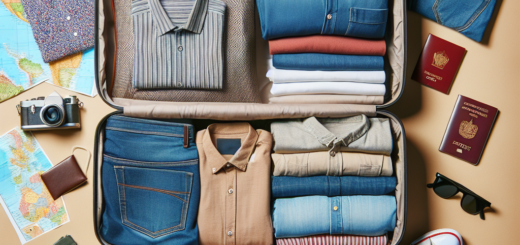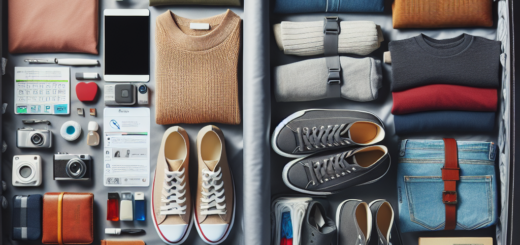How To Pack A For A Week Backpacking Trip

Are you ready for an adventure of Week Backpacking Trip? If so, it’s crucial to ensure that you pack efficiently and effectively. In this article, we will provide you with all the necessary tips and tricks to help you pack for a week-long backpacking trip. Whether you’re a seasoned traveler or a first-timer, these insights will ensure you have everything you need without weighing down your backpack. So, let’s dive in and discover the secrets to a perfectly packed backpack for your upcoming adventure!
Choosing the Right Backpack
When preparing for a backpacking trip, one of the most important decisions you will make is choosing the right backpack. There are several factors to consider when making this decision.
Consider the Duration of Your Trip
The first thing you should consider is the duration of your trip. If you are going on a week-long backpacking adventure, you will need a larger backpack than if you are just going on an overnight hike. Take into account how much gear and clothing you will need to bring and choose a backpack with an appropriate size and capacity for your needs.
Determine the Capacity You Need
In addition to the duration of your trip, you also need to think about the capacity you need in a backpack. The capacity refers to the amount of volume the backpack can hold. It is measured in liters and determines how much gear and supplies you can bring with you. Consider the type of gear you will need to bring and choose a backpack with a capacity that can accommodate everything comfortably.
Look for Comfortable Straps and Padding
Comfort is key when it comes to choosing a backpack. Look for one with comfortable straps and padding. The shoulder straps should be wide and adjustable, allowing you to distribute the weight evenly across your shoulders. The padding on the back panel should be cushioned to provide comfort and prevent discomfort from carrying a heavy load for extended periods of time. Adjustable hip belts are also an important feature to help distribute the weight to your hips and relieve strain on your shoulders.
Check for Convenient Features
When choosing a backpack, it’s worth considering the convenient features it offers. Look for backpacks with multiple compartments or pockets, as they provide better organization for your gear. Some backpacks also come with hydration bladder compatible sleeves, which allow you to stay hydrated without having to stop and reach for a water bottle. Other features to consider include external attachment points for gear like trekking poles, ice axes, or sleeping mats, as well as a rain cover to protect your belongings during wet weather.
Essential Clothing Items
When it comes to clothing for a backpacking trip, durability and comfort are key. Here are some essential clothing items you should consider packing.
Durable and Comfortable Pants
Investing in a pair of durable and comfortable pants is essential for a backpacking trip. Look for pants made from lightweight and quick-drying materials that provide both comfort and durability. Some pants are even designed with features like zip-off legs or built-in insect repellent to offer versatility and protection against pests.
Moisture-Wicking Shirts
Moisture-wicking shirts are a must-have item for any backpacking trip. These shirts are designed to pull sweat away from your body, keeping you dry and comfortable. Look for shirts made from synthetic materials like polyester or merino wool, as they have excellent moisture-wicking properties. These shirts also dry quickly, making them ideal for multi-day trips where laundry opportunities may be limited.
Insulating Layers
Regardless of the season, it is essential to pack insulating layers for your backpacking trip. These layers provide warmth when temperatures drop. Fleece jackets, down vests, or synthetic insulated jackets are great options for lightweight and packable insulation. Layering your clothing allows you to easily adjust your body temperature as needed throughout the day.
Rain Gear
Rain can happen unexpectedly during a backpacking trip, so it’s crucial to be prepared with proper rain gear. Look for a waterproof and breathable jacket and pants to keep you dry. Make sure they are lightweight and packable so they don’t take up too much space in your backpack. Additionally, consider packing a waterproof cover for your backpack to protect your gear during wet conditions.
Hiking Socks
Investing in high-quality hiking socks is essential to keep your feet comfortable and blister-free during your backpacking trip. Look for socks made from moisture-wicking materials like merino wool or synthetic blends. These socks should provide cushioning and support to prevent blisters and hot spots. Remember to pack enough pairs to last throughout your trip, as clean and dry socks can make a significant difference in your overall comfort.
Undergarments and Sleepwear
Don’t forget about packing undergarments and sleepwear for your backpacking adventure. Choose underwear and bras made from moisture-wicking materials to keep you comfortable while on the move. In terms of sleepwear, consider lightweight options like base layer tops and bottoms or dedicated sleeping shirts and pants. These items will provide comfort and allow you to get a good night’s rest after a long day of hiking.
Footwear
Selecting the right footwear is crucial for a comfortable and enjoyable backpacking trip. Here are some options to consider.
Hiking Boots or Trail Shoes
When it comes to footwear for hiking, you have two main options: hiking boots or trail shoes. Hiking boots offer excellent ankle support and protection, making them suitable for rugged terrains or carrying heavier loads. Trail shoes, on the other hand, are lighter and more flexible, offering better breathability and agility. Choose the option that best suits your needs and preferences.
Water Shoes or Sandals
If your backpacking trip involves water activities like river crossings or swimming, it’s a good idea to pack water shoes or sandals. These shoes are designed to provide traction on wet surfaces and are made from quick-drying materials. They are lightweight and won’t take up much space in your backpack. Having a pair of water shoes or sandals will allow you to safely navigate wet environments without compromising foot comfort.
Camp Shoes or Slippers
After a long day of hiking or exploring, your feet will appreciate a break from your hiking boots or trail shoes. Packing a pair of camp shoes or slippers will provide your feet with some much-needed comfort and relaxation. Look for lightweight options that are easy to slip on and offer cushioning for tired feet.
Sleeping Gear
Getting a good night’s sleep is essential to recharge for the next day’s adventures. Here are some sleeping gear essentials you should consider packing.
Lightweight and Compact Tent
A lightweight and compact tent is a must-have for backpacking trips where you’ll be camping overnight. Look for a tent that is easy to set up and pack down, as well as one that provides adequate protection against the elements. Consider the number of people who will be sharing the tent and choose a size that comfortably accommodates everyone. Additionally, check the tent’s packed size and weight to ensure it fits well in your backpack.
Sleeping Bag
Choosing the right sleeping bag is crucial for a comfortable and warm night’s sleep. Consider the temperature rating of the sleeping bag to ensure it matches the expected conditions. If you’ll be backpacking in colder climates, opt for a sleeping bag with a lower temperature rating. Look for a bag that is lightweight and compressible, making it easier to pack and carry. Remember to consider your own personal preferences, such as whether you prefer a mummy-style or rectangular sleeping bag.
Sleeping Pad or Mat
A sleeping pad or mat provides cushioning and insulation between you and the ground. It helps to prevent heat loss and adds comfort to your sleeping setup. There are a variety of options to choose from, including self-inflating pads, inflatable pads, or closed-cell foam mats. Consider factors such as weight, packability, insulation, and comfort when selecting a sleeping pad or mat that suits your needs.
Pillow
While a pillow may seem like a luxury item, it can greatly improve your sleep quality while backpacking. Look for inflatable pillows or compressible pillows that take up minimal space in your backpack. Some sleeping bags also have built-in pillow pockets where you can stuff extra clothing to create a makeshift pillow. Choose a pillow that provides the level of comfort you desire without being too bulky or heavy.
Cooking and Food
Proper nutrition is essential during a backpacking trip to maintain energy levels and keep you fueled for the adventure ahead. Here are some cooking and food essentials to consider packing.
Stove and Fuel
When it comes to cooking meals on a backpacking trip, a reliable stove is a must-have. Look for lightweight and compact camping stoves that are easy to set up and use. Consider the type of fuel the stove requires and pack an appropriate amount for the duration of your trip. Propane, butane, or liquid fuel options are common choices, each with its own advantages.
Cookware and Utensils
Having the right cookware and utensils can make a big difference in your backpacking cooking experience. Look for lightweight and compact cookware sets that include a pot, pan, and utensils. Consider the material of the cookware; titanium, aluminum, or stainless steel options are popular due to their lightweight nature. Don’t forget to pack a lightweight cutting board and a sharp knife for food preparation.
Food and Snacks
Plan your meals and snacks ahead of time to ensure you have enough food to sustain you throughout your backpacking trip. Choose lightweight and non-perishable foods that provide the necessary energy and nutrients. Dehydrated meals, energy bars, nuts, and dried fruits are popular choices. Consider your dietary preferences and any food allergies or restrictions when selecting your backpacking food.
Water Filtration
Access to clean drinking water is crucial during a backpacking trip. Instead of carrying large amounts of water, consider investing in a water filtration system. Water filters or purifiers allow you to filter water from natural sources like streams, lakes, or rivers. Look for lightweight and compact options that effectively remove bacteria, protozoa, and other contaminants from the water. If you plan to primarily rely on pre-packaged water, ensure you have enough for the duration of your trip or know where you can refill along the way.
Hygiene and Personal Care
Maintaining hygiene and personal care is important for your well-being during a backpacking trip. Here are some essentials to include in your pack.
Toothbrush, Toothpaste, and Dental Floss
Don’t neglect your dental hygiene while backpacking. Pack a lightweight and compact toothbrush, toothpaste, and dental floss to keep your teeth and gums clean and healthy. Consider mini-sized versions or travel-friendly options to save space in your backpack.
Soap or Body Wash
To stay fresh and clean during your backpacking adventure, carry a small bottle of biodegradable soap or body wash. Look for options that are gentle on the skin and can be used in various environments, including natural water sources for bathing. Remember to adhere to Leave No Trace principles and properly dispose of soapy water away from water sources.
Towel or Packable Microfiber Towel
A towel is a versatile item that comes in handy during a backpacking trip. Look for a lightweight and quick-drying towel or a packable microfiber towel. These towels are highly absorbent and take up minimal space in your backpack. Use them for drying off after bathing, wiping away sweat, or cleaning up spills.
Toilet Paper and Trowel
Proper waste disposal is a critical part of backpacking. Pack toilet paper in a resealable plastic bag or opt for individually wrapped travel-sized rolls. Remember to follow Leave No Trace principles and pack out used toilet paper. Additionally, bring a small trowel to dig a hole for burying human waste at least 6-8 inches deep, away from water sources and trails.
Sunscreen and Insect Repellent
Protecting your skin from the sun’s harmful rays and pesky insects is essential during a backpacking trip. Pack a sunscreen with a high SPF rating to shield your skin from UV radiation. Additionally, bring insect repellent to ward off mosquitoes, ticks, and other biting insects. Look for a repellent that contains DEET or another effective active ingredient.
Navigation and Safety
Staying safe and on the right track is crucial when backpacking. Consider the following navigation and safety essentials.
Maps and Compass
Carry detailed maps of the areas you will be backpacking through, along with a compass to help you navigate. Familiarize yourself with the maps beforehand and plan your route accordingly. In addition to paper maps, consider using digital navigation apps or GPS devices as backup tools. Ensure you know how to use a compass and read topographic maps effectively.
GPS device or Smartphone with GPS
In addition to traditional maps and compass, having a GPS device or a smartphone with GPS capabilities can provide valuable navigational support. These devices can help you track your progress, mark waypoints, and locate important features or points of interest. Ensure your device is fully charged and consider carrying a portable power bank or extra batteries for extended trips.
First Aid Kit
Accidents can happen during a backpacking trip, so it’s important to have a well-stocked first aid kit on hand. Pack essentials like adhesive bandages, gauze pads, antiseptic wipes, blister treatments, pain relievers, and any medications specific to your needs. Familiarize yourself with the contents of your first aid kit and know how to use them properly.
Emergency Whistle
Carrying an emergency whistle is a simple yet effective way to signal for help in case of an emergency. Whistles are lightweight, compact, and can be heard from a distance. Three short blasts on a whistle is a recognized distress signal. Keep your whistle easily accessible, preferably attached to your backpack or clothing.
Headlamp or Flashlight
A reliable light source is essential for navigating in low-light conditions or during nighttime. Pack a headlamp or flashlight with sufficient battery life. Headlamps are particularly useful as they leave your hands free for other tasks. Additionally, carry spare batteries or ensure your rechargeable batteries are fully charged.
Miscellaneous Gear
There are a few miscellaneous gear items that can come in handy during a backpacking trip. Consider including these essentials in your pack.
Multi-tool
A multi-tool is a versatile item that can handle various tasks, from cutting to opening cans. Look for a compact and lightweight option that includes essential tools like a knife, pliers, screwdriver, and scissors. A multi-tool can save space and weight in your backpack by eliminating the need for individual tools.
Repair Kit
Having a repair kit can help you quickly fix any gear or equipment issues that may arise during your backpacking trip. Pack items like duct tape, nylon repair patches, needle and thread, and super glue. These items can help fix tears in clothing or gear, secure loose straps, or mend broken tent poles.
Duct Tape
Duct tape is a versatile tool that has countless uses in the backcountry. From patching gear to securing items together, duct tape can be a lifesaver. Consider wrapping a small amount around your trekking poles or water bottle to save space in your backpack.
Extra Batteries
If you will be relying on electronic devices like GPS devices, headlamps, or other battery-powered equipment, it’s important to pack extra batteries. Check the battery requirements for your devices and pack an appropriate number of spares. Consider bringing rechargeable batteries and a portable power bank for longer trips.
Trash Bags
Carrying and properly disposing of your trash is crucial for Leave No Trace principles and environmental stewardship. Pack lightweight and durable trash bags to separate your waste. Consider bringing extra bags for picking up any trash you may encounter along the trail. Dispose of your trash properly, either by packing it out or using designated waste disposal facilities.
Personal Items
In addition to gear and essentials, there are personal items that you should consider packing for your backpacking trip.
Identification and Money
Carry your identification, such as a driver’s license or passport, and any necessary permits or licenses for your trip. It’s also important to have some cash or a backup payment method in case of emergencies or situations where credit cards may not be accepted. Keep these items in a secure and waterproof container or pouch.
Electronics and Chargers
If you plan to bring electronic devices like cameras, smartphones, or GPS devices, don’t forget to pack the necessary chargers or cables. Consider bringing a portable solar charger or power bank to keep your devices charged when you don’t have access to electrical outlets.
Reading Material
During downtime at camp or while taking breaks along the trail, having some reading material can be a great way to relax and unwind. Whether it’s a paperback book, a Kindle, or a magazine, choose lightweight options to minimize the weight in your backpack.
Travel Journal and Pen
Keeping a travel journal is a wonderful way to document your backpacking trip and capture memorable moments. Record your thoughts, experiences, and observations along the way. Pack a lightweight and compact journal and a reliable pen to make sure you can jot down your thoughts whenever inspiration strikes.
Comfort Items
Lastly, don’t forget to pack a few comfort items that will make your backpacking experience more enjoyable. This could be a small camping pillow, a cozy camp chair, or even your favorite snack or treat. These items can provide a sense of familiarity and comfort during your outdoor adventure.
Pack Organization
Once you have gathered all the necessary gear and essentials for your backpacking trip, it’s important to pack and organize everything in a way that maximizes comfort and accessibility.
Pack in Layers
When packing your backpack, aim to distribute the weight evenly and utilize the available space effectively. Start by placing heavier items at the bottom, closer to your back, and lighter items towards the top. This helps maintain balance and stability while hiking. Additionally, consider packing items you’ll need during the day in external pockets or easily accessible compartments.
Use Compression Bags or Packing Cubes
Compression bags or packing cubes are useful for maximizing space and keeping your gear organized. They allow you to compress clothing and other soft items, reducing their volume and making them more compact. Consider using separate compression bags or packing cubes to compartmentalize different types of gear, such as clothing, toiletries, or cooking equipment.
Separate Dirty and Wet Items
To keep clean and dry items separate from dirty or wet ones, pack a waterproof or water-resistant bag for storing dirty clothes or wet gear. This helps prevent cross-contamination and keeps your clean gear dry and odor-free.
Keep Frequently Used Items Easily Accessible
Pack frequently used items, such as a water bottle, snacks, map, compass, or rain gear, in easily accessible pockets or compartments. This saves time and effort when you need to access these items quickly without having to dig through your entire backpack.
Balance Weight Distribution
Maintaining a balanced weight distribution is essential for comfort and stability while hiking. Ensure that heavy items are evenly distributed from side to side and that they are packed close to your back. This helps prevent strain on your shoulders and back, allowing for a more comfortable and enjoyable backpacking experience.
By following these guidelines and taking the time to carefully select and pack the right gear and essentials, you’ll be well-prepared for a week-long backpacking trip. Remember to always prioritize comfort, safety, and environmental responsibility when making your gear choices. Happy backpacking!



